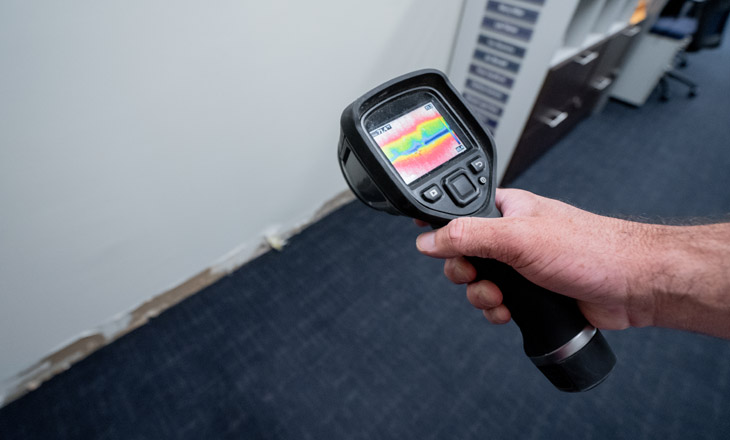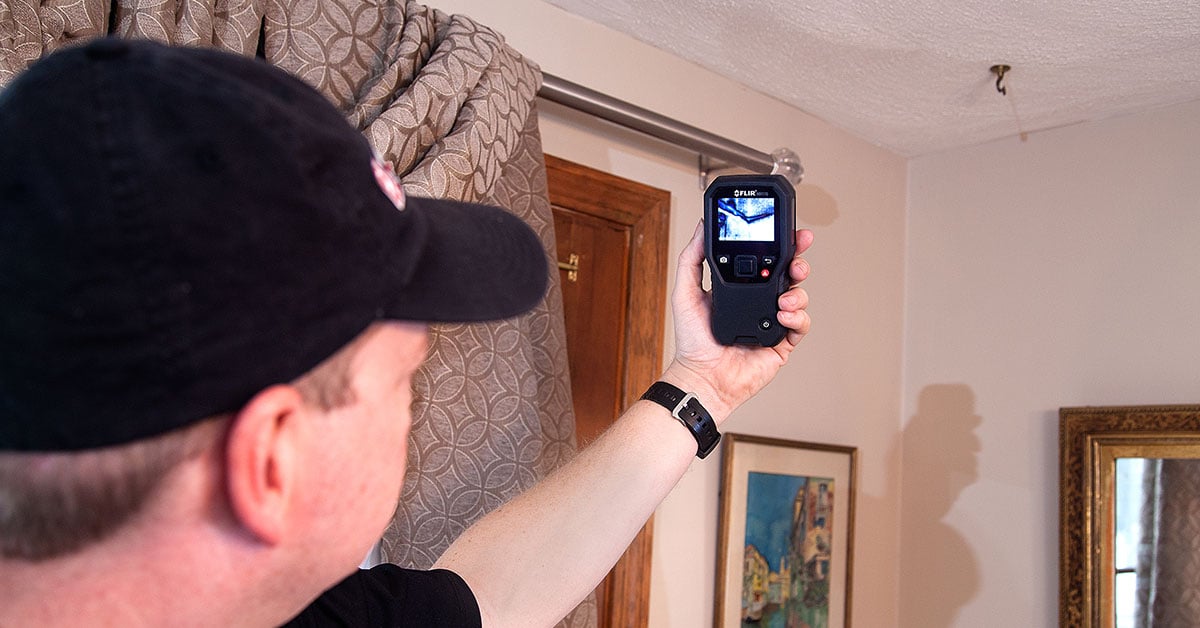Top Water Leak Detection Techniques to Safeguard Your Building from Water Damages
Top Water Leak Detection Techniques to Safeguard Your Building from Water Damages
Blog Article
Cutting-edge Solutions for Early Discovery of Water Leaks in Buildings and Framework
As the stability of structures and facilities is extremely important, the difficulty of very early detection of water leakages has actually spurred ingenious solutions that guarantee to revolutionize the method we guard against prospective problems. From advanced leak discovery technologies to the implementation of IoT sensing units for real-time monitoring, the landscape of leak avoidance is evolving quickly. Artificial intelligence algorithms use a glimpse into the future of leakage forecast, while thermal imaging presents a non-intrusive method for identifying surprise leakages. Automated water flow analysis systems are reshaping exactly how leakages are recognized and addressed, leading the way for an aggressive strategy to water leak detection. Each of these services holds the crucial to making certain the integrity and long life of our constructed setting, motivating a shift towards a more sustainable and efficient future.
Advanced Leakage Discovery Technologies
Advanced leakage discovery innovations, furnished with innovative sensing units and algorithms, play an important function in swiftly identifying and pinpointing water leakages in numerous setups. These innovations utilize a combination of acoustic, thermal, and electromagnetic picking up approaches to discover leaks accurately. Acoustic sensing units find the noise of leaving water, enabling specific localization of the leakage source. Thermal imaging detects temperature level modifications brought on by water leak, supplying one more reliable technique for leak recognition. Electromagnetic sensors can determine changes in magnetic fields triggered by water, supplying yet one more layer of leakage detection capacity.

IoT Sensors for Real-Time Tracking
In the world of modern-day water leakage discovery, the integration of IoT sensors for real-time tracking represents an essential innovation in boosting proactive leak detection capabilities. These sensors provide constant tracking of water supply, supplying real-time information on water circulation prices, stress variants, and temperature level modifications. By leveraging IoT innovation, these sensing units can find also the tiniest abnormalities in water use patterns, allowing very early recognition of possible leakages before they intensify into major issues.
IoT sensors transmit information to a central platform, where sophisticated algorithms analyze the information and create signals or alerts when abnormalities are discovered. This real-time tracking capability allows homeowner or center supervisors to immediately deal with leaks, minimizing water damages, decreasing repair work costs, and preserving water resources.
Furthermore, IoT sensing units can be incorporated with building monitoring systems, enabling automated responses to identified leaks, such as turning off water shutoffs or triggering pumps to mitigate the influence of leaks. On the whole, the application of IoT sensors for real-time tracking dramatically improves the performance and efficiency of water leak discovery in buildings and facilities.
Machine Understanding Algorithms for Leak Prediction

One secret advantage of making use of artificial intelligence for leakage forecast is its ability to continually discover and improve its precision over time. As even more data is accumulated and fed into the formula, it can fine-tune its predictions and adjust to changing problems, ultimately raising the dependability of leakage detection systems.
In addition, maker learning formulas can help in determining refined indications of leakages that may go undetected by traditional surveillance methods. water leak detection. By examining complex data collections in real-time, these algorithms can supply very early warnings and informs, allowing for timely treatment and preventive upkeep to minimize potential water damages and linked costs
Using Thermal Imaging for Leakage Discovery
Thermal imaging innovation supplies a promising method for identifying water leaks in different systems and frameworks. By making use of infrared radiation and temperature variations, thermal imaging electronic cameras can recognize hidden leaks that are not quickly noticeable to the nude eye. When water escapes from pipes or structures, it commonly transforms the temperature of the surrounding area, creating temperature differentials that thermal cams can record. These temperature level abnormalities are then translated into visible pictures, highlighting the precise place of the leakage.
Among the crucial advantages of thermal imaging for leak detection is its non-intrusive nature. Unlike traditional methods that might call for burglarizing walls or more helpful hints floors to locate leaks, thermal imaging enables non-destructive testing. This not just conserves time and reduces costs but try this website likewise lessens interruption to the structure or infrastructure being assessed. In addition, thermal imaging can rapidly check big locations, supplying a detailed overview of prospective leakage sources in a timely manner. Generally, the usage of thermal imaging modern technology improves the efficiency and precision of water leak detection, making it an important device for preserving the honesty of structures and facilities.
Automated Water Circulation Evaluation Systems
Just how can automated water flow evaluation systems revolutionize the discovery and monitoring of leaks in numerous systems and facilities? Automated water flow analysis systems provide an aggressive strategy to leak detection by constantly keeping track of water circulation rates and patterns. By developing standard data, these systems can quickly recognize variances that might suggest a leakage, allowing timely intervention to stop comprehensive damage.
These systems utilize advanced algorithms to examine real-time information and supply instant informs when anomalies are found, enabling speedy action to be published here taken. In addition, automatic water circulation evaluation systems can be integrated with structure monitoring systems or IoT systems, enhancing general effectiveness and allowing remote tracking abilities.
In addition, the data collected by these systems can be made use of for predictive upkeep objectives, assisting to recognize prospective powerlessness in the framework before leakages happen. Overall, the application of automatic water flow evaluation systems can significantly improve leakage detection and administration methods, eventually resulting in cost financial savings, minimized water wastage, and enhanced sustainability in structures and framework.

Conclusion
To conclude, the integration of innovative leakage detection modern technologies, IoT sensing units, artificial intelligence algorithms, thermal imaging, and computerized water circulation evaluation systems offers cutting-edge services for early discovery of water leaks in structures and infrastructure. These innovations enable real-time tracking, prediction of leakages, and effective detection approaches to avoid water damage and waste. Executing these options can help in keeping the honesty and sustainability of water supply in different settings.
Report this page